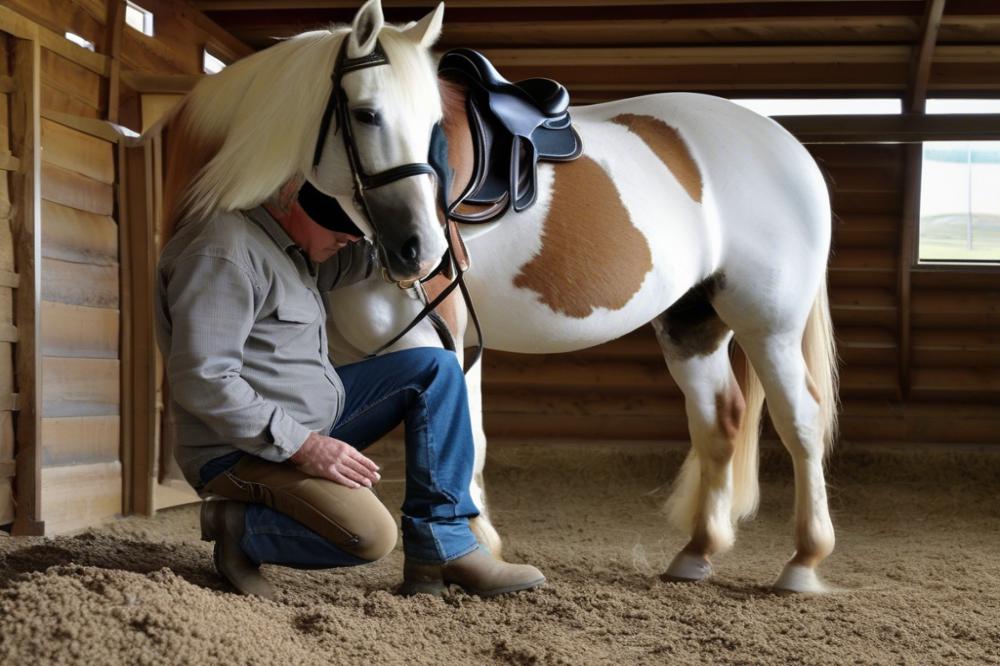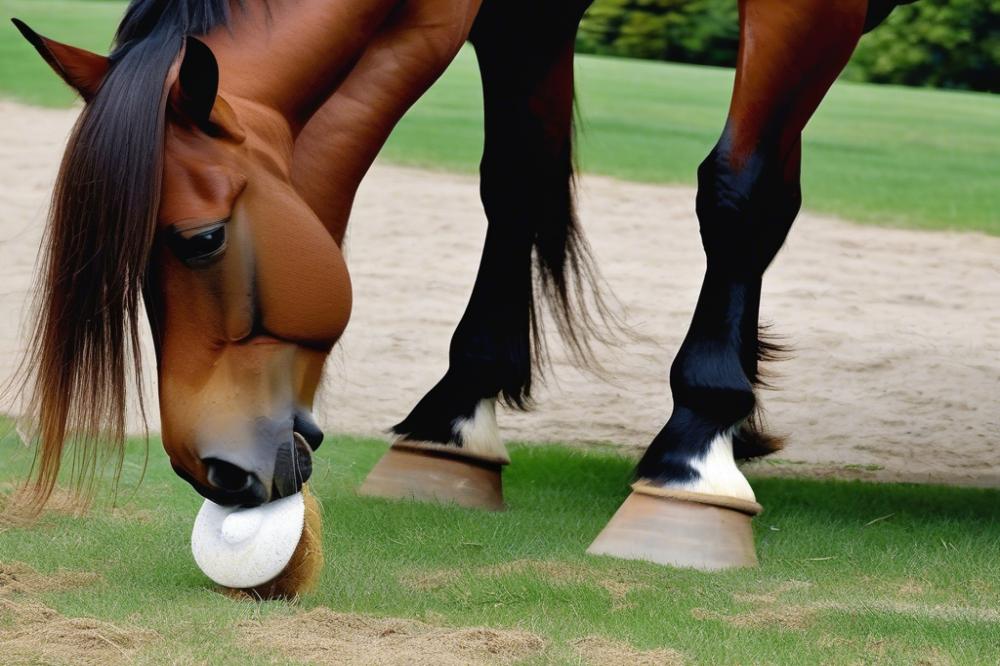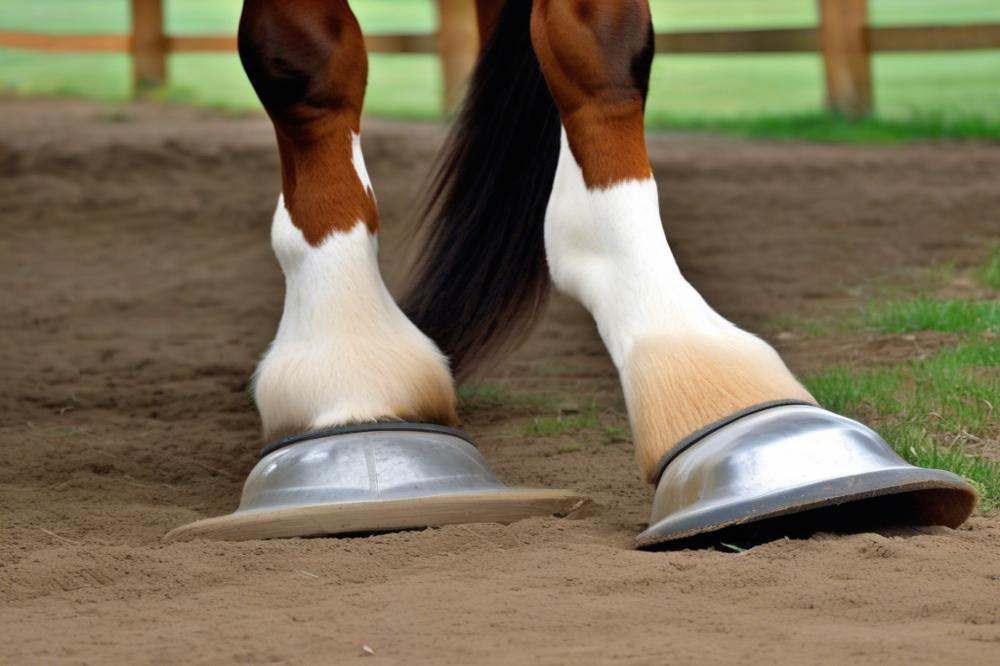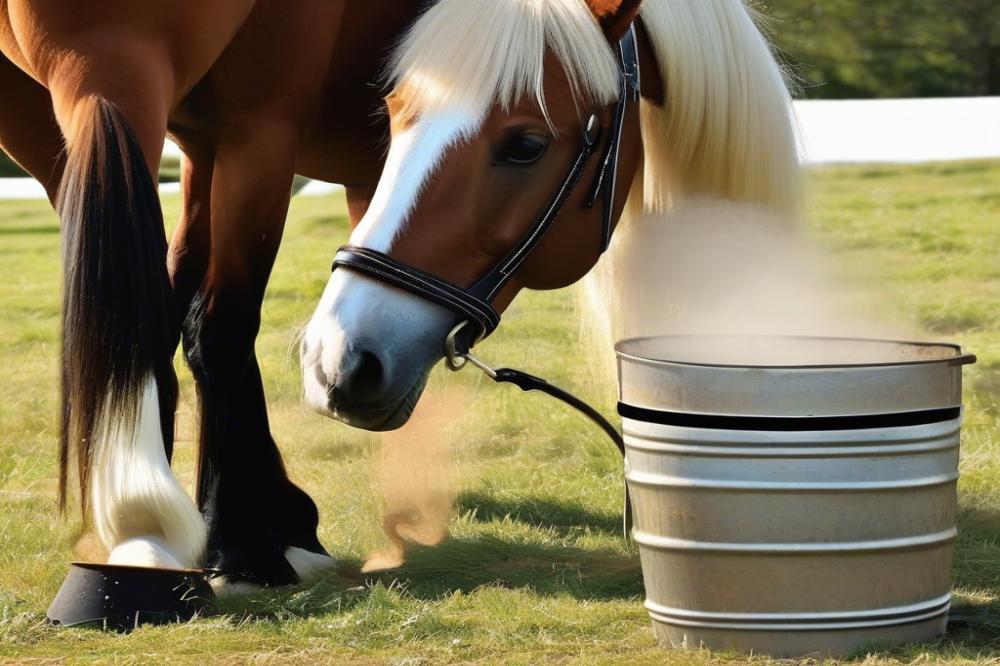Understanding Bad Horse Shoeing
Imagine trying to walk around all day in shoes that just don’t fit right. Not very comfortable, is it? Well, that’s how our equine friends feel when they don’t receive proper shoeing. Bad horse shoeing refers to the practice where horses’ hooves are not cared for correctly, leading to a host of problems. This can include improperly fitted shoes, neglect of hoof trimming, or any other missteps in the shoeing process. Just as we need our shoes to fit well for comfort and support, horses depend on correct maneuvering and balance from sound hoof care to stay healthy and happy.
Why is shoeing so important, you may wonder? For any horse owner, understanding the basics of horse care is crucial. Proper shoeing provides necessary protection for horses’ hooves, much like putting a good pair of sneakers on your feet. It keeps their delicate structures, particularly in high-impact activities, from suffering injuries. Shoeing directly influences horse health, making it an essential part of managing equine well-being. A well-shod horse can perform better, feel better, and experience fewer injuries.
Now, let’s dive into the consequences of poor shoeing practices, which can be quite serious. Imagine a favorite horse being unable to run freely due to hoof pain. That’s one picture no owner wants in their mind! Without proper shoeing, horses may face challenges like lameness, uneven wear of their hooves, or even more severe equine issues that could require veterinary intervention. Bad shoeing doesn’t just create immediate discomfort. Over time, it can lead to chronic problems that impact the horse’s lifestyle and career. You wouldn’t want your best friend, the horse that clears every jump effortlessly, to struggle due to avoidable hoof troubles.
Various horse breeds with pictures show us the beautiful diversity within this noble species. Each breed has specific needs that must be met, and shoeing is no different. Just like comparing a brabant horse vs clydesdale reveals unique traits, taking the time to understand your horse’s hoof care requirements is essential. So buckle up, because as we explore this topic further, we’ll uncover how to keep those hooves healthy and what to look out for, ensuring every horse’s stride is as smooth as can be!
Understanding the Anatomy of a Horse’s Hoof

The hoof is an incredible structure that plays a vital role in the overall health of a horse. At first glance, one might think it’s just a hard covering, but it’s much more than that. The hoof consists of several parts: the hoof wall, sole, frog, and various internal structures like the coffin bone. Each of these components interacts and supports the horse’s weight and movement. A hoof is like a shock absorber, helping to cushion the horse as it moves.
Hoof care is essential in maintaining equine health. A healthy hoof allows a horse to run, jump, and perform its best. If the hoof is not in good shape, the horse can suffer from discomfort, lameness, or even long-term injury. Just as humans rely on their feet for mobility, horses depend on their hooves for functional and emotional well-being. When horses experience hoof pain, it can affect their temperament too. Nobody wants a cranky horse!
Importance of Proper Shoeing Techniques
Good shoeing techniques are a crucial part of horse care. They help protect the hoof from wear and tear while allowing it to function properly. Think of it like wearing the right shoes for a big hike. If you wear flip-flops, your feet will hurt after a while, right? Horses feel the same way without the proper shoes.
Incorrect shoeing can lead to various equine issues. A poorly fitted shoe can cause pressure points, leading to sores and infections. If the angle or balance of the hoof is off, it may result in joint stress or muscle strain. This situation can affect the horse’s ability to perform and may lead to more serious problems down the line. It’s like building a house on a shaky foundation—it just won’t stand up!
With proper hoof care and shoeing, a horse can live a happy and active life. Shoeing consequences can ripple through their entire health and capabilities. As horse owners, it is important to pay attention to these details. Regular check-ups with a qualified farrier can help keep a horse’s hooves in top shape. In the end, you want your horse to feel as good as it looks.
Common Mistakes in Horse Shoeing

Shoeing a horse isn’t just a formality; it’s a vital part of horse care. A few mistakes can lead to serious equine health problems. Let’s take a closer look at some frequent errors made by farriers.
List of Frequent Errors Made by Farriers
One common slip is failing to properly assess the hoof shape. Some farriers rush this step, leading to shoes that don’t fit right. Overlooking a hoof’s natural angle can also be a disaster. Not every horse needs the same shoe style. Skipping the cleaning of the hoof before applying shoes is yet another error. Dust and debris can affect the bond between the hoof and shoe. It’s like trying to stick two pieces of tape together when one is covered in lint!
Impact of Improper Shoeing Techniques
When shoes are not fitted correctly, discomfort for the horse is inevitable. This can lead to uneven weight distribution. Consequently, the animal may start to favor one leg over another. Long-term effects can include joint problems or even lameness. Would you want to walk around in shoes that pinch your toes? Horses feel the same way.
Using the wrong type of shoe can cause issues too. For instance, if a horse with flat feet is given high-heeled shoes, it can result in a world of hurt. This kind of mistake not only affects the hoof but also impacts overall horse health.
Signs of Bad Horse Shoeing
How can you tell if your horse is suffering from poor shoeing? Look for signs like limping or reluctance to move. Your horse might also spend too much time shifting its weight from hoof to hoof. This is a clear sign something is off. A horse in pain often has a change in behavior; it may even seem grumpy or anxious.
Watch for cracks or chips in the hooves, too. These can indicate improper shoeing or poor hoof care overall. A horse’s coat condition may even be affected, revealing underlying equine issues. Most importantly, pay attention! Early detection can prevent bigger problems down the line.
Physical Consequences of Bad Horse Shoeing

Effects on Hoof Health
Improper shoeing can lead to serious hoof problems. When a horse’s hooves aren’t balanced correctly, it can cause discomfort. Hooves might crack or chip, making them vulnerable to infections. Simply put, the health of a horse’s hooves is crucial for overall equine health. Consistent hoof care should be top of mind for every owner. After all, a healthy hoof supports a happy horse.
Potential for Lameness and Pain
No one wants to see a horse in pain. Bad shoeing can lead straight to lameness, which makes everything difficult for the animal. Imagine trying to walk on a rocky road with shoes that don’t fit! Horses communicate their discomfort through behaviors. Sometimes they will refuse to move or will limping. Keeping an eye out for these signs is essential in horse care. Pain management becomes a priority when shoeing consequences rear their ugly heads.
Long-Term Damage to Joints and Ligaments
Everything is connected in a horse’s body. When hooves suffer, joints and ligaments can take a hit too. If a horse has to adjust its stride because of bad shoes, it puts swelling on the joints. Over time, damage can build up, leading to serious equine issues. It’s almost like a game of dominoes; one problem leads to another. Long-term effects can hinder performance as well, affecting everything from jumping to simple trotting.
Behavioral Consequences
Changes in the Horse’s Movement and Behavior
When a horse has poorly fitted shoes, it can feel like trying to walk in two left shoes—awkward and uncomfortable! Horses may start to move differently. You might notice a limp or a shift in their gait. Those little changes can lead to larger problems down the road. If the shoes aren’t aligned well, the horse might avoid putting weight on a certain foot. This awkwardness can lead to uneasiness when riding or even just standing around.
Horses are creatures of habit. Sudden changes can throw them off their game. An animal that once trotted with grace might become hesitant and uneasy. Out in the pasture, a horse might drop to a trot instead of a canter to avoid discomfort. This change can be concerning for any horse owner who is devoted to proper horse care.
Stress and Anxiety Related to Discomfort
Each horse has its personality, and discomfort can trigger stress and anxiety. Imagine feeling a constant pinch on your foot. It doesn’t take long to feel cranky! Horses express discomfort in many ways. Some may act jumpy or easily spooked, while others might just withdraw and seem less social.
Stress doesn’t just affect a horse’s mood. It can also impact overall equine health. A horse that’s worried might not eat as well as it should, leading to bigger issues. Owners need to be observant. Increased heart rates, sweating, or changes in eating habits could be signs something is off.
Effects on Training and Performance
Training a horse is all about trust and communication. If a horse is dealing with shoeing consequences, it can throw a wrench in that relationship. A horse that is uncomfortable won’t focus on learning new things. Some routines may take longer because the animal simply isn’t comfortable enough to perform.
Performance isn’t just about speed or skill; it’s also about the horse’s well-being. Whether in the show ring or out on a trail ride, a horse that is moving freely is a happy horse. Poor hoof care can dampen a good day of riding. There’s nothing quite like the feeling of gliding through a field with a horse that is responsive and engaged, right? When they are inhibited by discomfort, the joy can quickly fade.
Horse owners must keep a close eye on their equine friends. The right shoeing can make a world of difference, enhancing their performance and their love for riding. After all, a happy horse leads to a happy rider!
Financial Implications
Cost of Treating Issues Arising from Bad Shoeing
One of the first concerns that pops up with poor hoof care is the cost. Veterinary bills can pile up quickly when hoof-related problems arise. Imagine your horse starts limping or showing signs of pain. You could find yourself shelling out a hefty sum for diagnostics and treatments. Treatment for minor issues like abscesses can range from a few hundred dollars to much more if surgery is needed. Frequent hoof issues not only drain wallets but can also lead to additional expenses in medication and special care.
Impact on Performance and Value of the Horse
Performance takes a hit when equine health isn’t prioritized. Horses that don’t have proper shoeing may struggle with their tasks, whether it’s jumping, racing, or just riding around the farm. Less performance means a lower market value. If you wanted to sell your horse, potential buyers will surely notice any limping or hesitation. A well-shod horse is easier to sell and often fetches a better price. Losing performance because of shoeing consequences can set back a trainer’s goals and diminish the horse’s return on investment.
Comparison of Costs for Proper Shoeing Versus Consequences
On the surface, proper shoeing might seem like an extra expense. However, investing in good hoof care is a wise choice. A typical farrier visit can range from $80 to $150, depending on the service provided. In comparison, treatment for ailments caused by poor shoeing can easily cost two or three times that amount. Think of it like maintaining a vehicle. Routine maintenance costs less than major repairs after breakdowns. It’s clear that spending on good hoof care leads to better long-term savings.
Equine issues stemming from bad shoeing can create a ripple effect. Owners must consider not only immediate costs but also future expenses and the potential long-term impact on their horse’s health and performance. To summarize, an upfront investment in proper shoeing can save significant amounts down the road and keep your horse feeling fine.
Preventing Bad Horse Shoeing
Importance of Choosing a Qualified Farrier
Finding the right farrier is not just important; it’s essential for equine health. Unqualified professionals can lead to serious shoeing consequences for your horse. Consider the farrier’s experience, education, and reputation. Ask around! Talk to other horse owners and trainers. Good farriers will be proud to show you their work. They often have a trail of happy hooves behind them. Remember, your horse can’t speak up when something goes wrong. So, it’s up to you to do your homework.
Regular Hoof Health Check-ups
Checking your horse’s hooves regularly can make a world of difference. You wouldn’t ignore a sore foot, right? Neither should your horse! Regular hoof inspections can catch early signs of trouble. Look for cracks or unusual wear patterns. You can even learn to spot some problems yourself. Make a habit of checking them every couple of weeks. A prompt visit to your farrier can save your horse a lot of pain and trouble later on.
Educating Horse Owners on Hoof Care
Knowledge is power, especially when it comes to horse care! Educated horse owners understand the importance of hoof care. They know how to recognize equine issues before they turn into big problems. Read books, watch videos, or attend workshops about hoof health. Talk with your farrier and ask questions. It’s not just about slapping on some shoes; it’s about keeping your horse happy and healthy. Sharing tips with fellow horse enthusiasts is also a great way to bump up everyone’s knowledge. After all, a well-informed owner is a responsible owner!
Wrapping It Up
Let’s take a moment to revisit why proper horse shoeing is so essential. Think of a horse’s hooves as the foundation of a building. If that foundation is shaky or poorly constructed, everything above it can suffer. Just like a sturdy pair of shoes can mean the difference between a comfortable walk and a painful blister, well-fitted horseshoes will protect your horse’s hooves and overall health. Neglecting this duty can lead to a whole heap of trouble.
Speaking of trouble, the consequences of overlooking proper shoeing practices are no laughing matter. Imagine a horse, once energetic and spry, now limping along as if it has its very own “donkey personality.” That’s not the type of spirit we want for our equine friends. Injuries, pain, and even long-term issues can arise from an inexperienced farrier or lack of regular care. Just like when “horse girl meaning” pops up, it’s a reminder of the deep connection people have with these magnificent animals, and we must treat them with the respect they deserve.
It’s fair to say, if you love your horse, you need to make shoeing a priority. Think about it—your horse depends on you. Routine checks and maintenance can prevent a lot of potential problems down the line. Don’t wait for minor issues to escalate into costly vet bills or, worse yet, permanent damage. It’s best to catch things early when it’s just a matter of a little trim and proper shoeing.
So, here’s the call to action, dear horse owners: take the time to educate yourself and seek out skilled farriers. Consult with experts who understand the unique needs of your horse, and make it a point to schedule regular hoof care appointments. Remember, it’s not just about the shoes; it’s about the health and happiness of your beloved companion.



